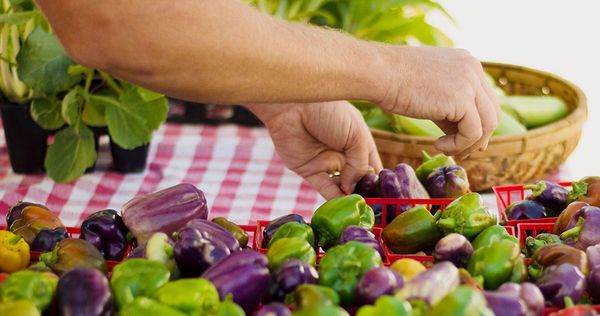If you follow food news closely, it seemed as though 2018 was the year of food-borne illness. Between contaminated lettuce, ground beef, burritos and eggs, it seemed like no food items - from grocery stores to fast casual dining - were left safe. After a study was released by Penn State regarding food safety at farmers’ markets, we at Sustainable Food Center decided to take a look at our farmers’ practices, and our oversight, to make sure we are keeping consumers safe.
Coaching and Oversight
Every vendor at an SFC Farmers' Market has received thorough coaching from market staff on their responsibility and commitment to food safety. We work closely with Austin Public Health to develop and update food safety policies, even leading to the development of specific farmers’ market permits for food vendors. From eggs and meat to kombucha and tacos, every SFC vendor holds a permit that certifies the business owner has taken precautionary steps to ensure safety and cleanliness from production to sales.
The Supply Chain
But how does food even make it from field to market? Supply chains in traditional retail outlets can see food moving upwards of 1500 miles before landing on a dinner plate. This food travels through multiple processing centers, warehouses, distribution points, trucks, loading docks and areas of storage before even seeing a grocery store shelf. At every stage in this chain, there’s the chance for contamination. But food that makes it’s way to a farmers’ market has usually been harvested within a few days and generally travels only 40 miles or less to the market.
Food Policy
Congress passed the Food Safety Modernization Act (FSMA) in 2011 to help prevent food-borne diseases, and many of the requirements are aimed at farm and ranch enterprises. In September of 2018 Sustainable Food Center hosted a FSMA workshop to help get our farmers up to speed on these regulations, which went into effect in January of 2019.
A reduction in the prevalence of food-borne illness is one of the singular achievements of food policy reform during the 20th Century. By working together to share technology—from pasteurization to refrigeration—the American public health and agribusiness communities have created a food system in which far fewer Americans are sickened by contaminated food, compared to a century before. While industry and regulators have at times worked together, advocacy and consumer demands for safe food have led the way.
What You Can Do
How can you ensure the food you feed to your family is safe? Shopping locally, knowing your farmer and staying informed by following Sustainable Food Center are step one. When shopping at a farmstand or farmers’ market make sure to shop for your perishable items last - bring a cooler bag and make sure that you can store food in a cool place until you get home. Ask your favorite vendors questions about how to process or handle food you are about to buy. Also, make sure to wash your reusable bags and rinse your produce before you eat it.
Sustainable Food Center is committed to improving food safety at our markets, and keeping you all up to date with relevant information. Happy shopping y’all!

